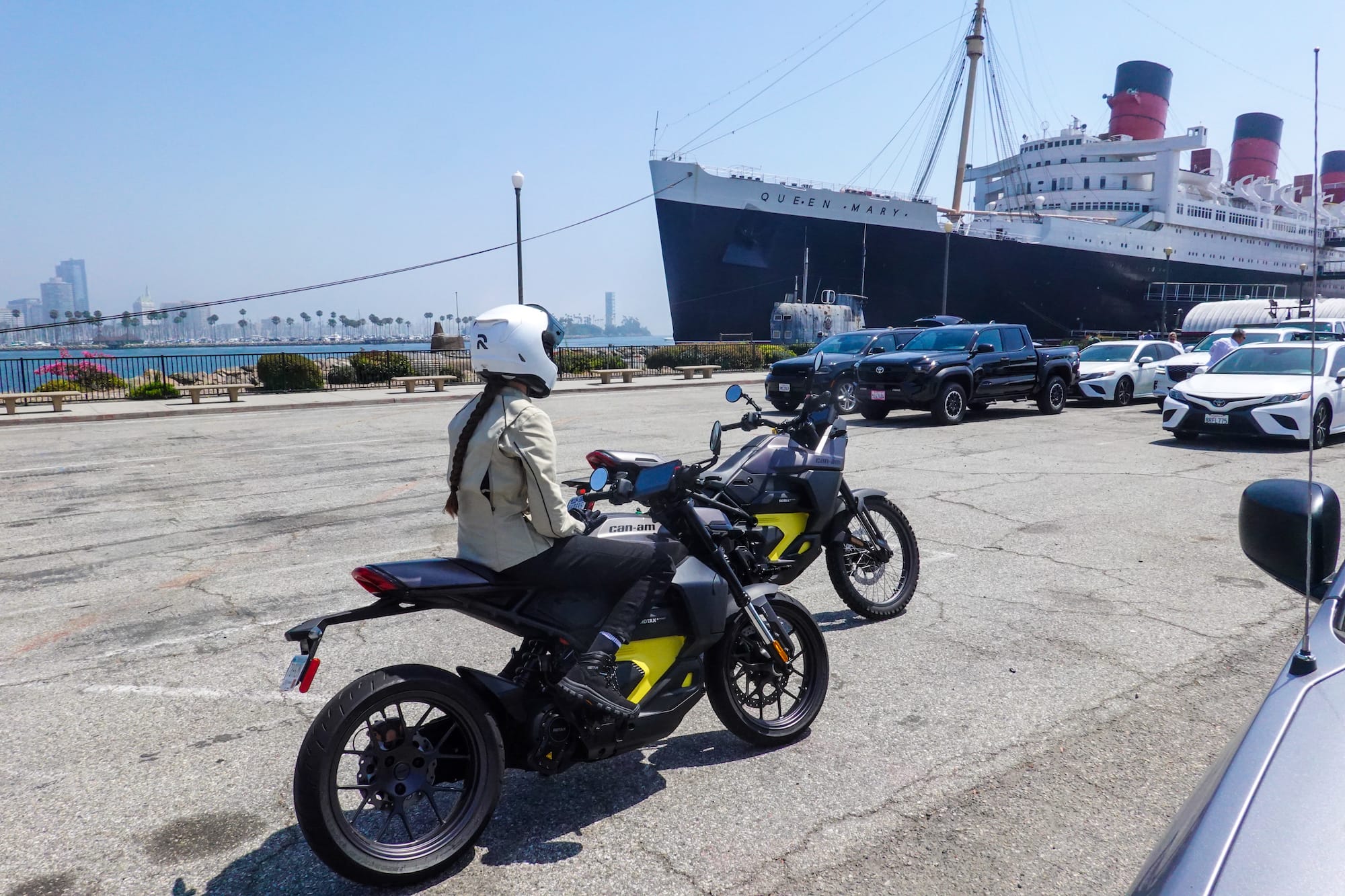LA Harbor on Can-Am's Origin and Pulse

As the busiest seaport in the entire Western Hemisphere, there’s perhaps no clearer example of an industrial megalopolis in the U.S. than the Port of Los Angeles.
Covering 7,500 acres along 43 miles of Southern California waterfront, the Port of Los Angeles is a wellspring serving as a source for much of what supports modern-day living in the West and beyond.
Where this massive port ends, another begins. Directly adjacent to the Port of Los Angeles, the Port of Long Beach covers 3,520 acres and extends this colossal shipping complex by an additional 25 miles.
To explore this area’s origins, and how industry here has transformed the pulse of life in the West, we charged up the Can Am Origin and Pulse electric motorcycles and rolled into the urban jungle.

The Founding of a Harbor
People and goods move on a massive scale here. Views in all directions are almost entirely uninterrupted by anything other than cityscape and waterways. What was once a shallow and desolate marsh has now become the largest business investment in America.
While this spot has been used as a seaport since at least the 1500s, it was Phineas Banning who earned the title of the Father of the Los Angeles Harbor in the 1850s and 1860s. By establishing the then-independent harbor town of Wilmington (now an LA neighborhood) and constructing a transportation system, Banning allowed people and goods to move effectively throughout the Southland.
By 1869, the first railroad in Southern California was transporting cargo between the burgeoning harbor complex and central LA. Two key events around the turn of the century quickly accelerated the shipping hub’s growth.